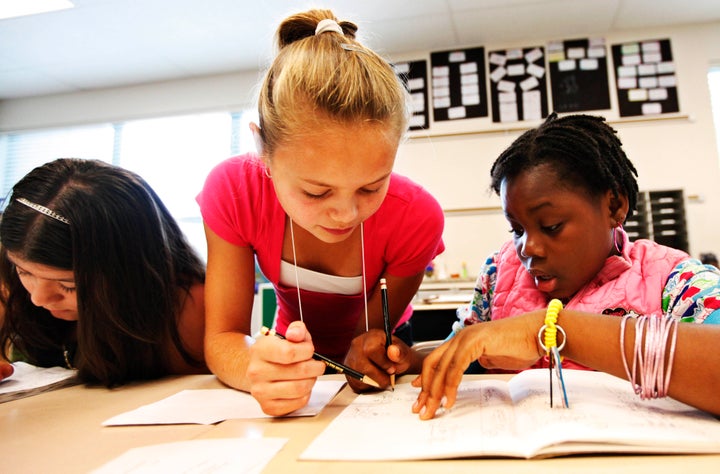
The last couple of days I've been soaking in a new white paper: "Right to Learn: Identifying Precedents for Sustainable Change," a document that I think nudges the serious conversation about real changes in future learning. The paper, written by Bruce Dixon and Susan Einhorn of the Anytime, Anywhere Learning Foundation, is the result of the discussions held at the Big Ideas Global Summit in June of 2010 (which was attended by the likes of Christopher Dede, Sugata Mitra, Karen Cator, Milton Chen, Angus King and many others.)
It poses one compelling question to frame the debate about education:
Have we reached the limits of our traditional school system's capacity to deal with the diversity of learners that come into our schools today?
I'm really intrigued by the fundamental shift articulated in the paper. It's a move away from a "right to an education" and towards a "right to learn" -- a shift that is only made possible by the advent of new technologies that connect us to the resources and people who can help us learn.
To do this we need to shift our thinking from a goal that focuses on the delivery of something -- a primary education -- to a goal that is about empowering our young people to leverage their innate and natural curiosity to learn whatever and whenever they need to. The goal is about eliminating obstacles to the exercise of this right -- whether the obstacle is the structure and scheduling of the school day, the narrow divisions of subject, the arbitrary separation of learners by age, or others -- rather than supplying or rearranging resources. The shift is extremely powerful...
I agree. It's huge. And it challenges the very basic assumptions that we have about this thing we call "school."
On many levels, this is scary territory to enter. But it articulates an important choice that has been niggling at me for a while in terms of where we should be spending our time and effort at this moment of huge disruption and challenge:
We can see an emerging crisis in our schools, while, on the other hand, we see a renaissance for learning. The question then simply becomes: would a completely different perspective that builds on the latter, be a more productive focus for us than the continued, largely unproductive, public debate around the former?
Instead of thinking about buildings and budgets, we think about what sort of learning might be possible. Instead of thinking about student teacher ratios and high stakes tests, we think about the impact that a child taking more responsibility for his or her learning might have on a child's life choices. It simply shifts our emphasis, and most importantly, our perspective.
As a parent and a former classroom teacher, I for one hope all of the current ideas for "reform" fail because few, if any, of them put our kids' learning lives first. Right now it's about more standardization in our classrooms, more competition between our schools, and whatever is easiest and cheapest to implement. In many ways, it's embarrassing the depth to which the conversation has sunk.
And I agree with the premise of the report: if we continue to place our energy toward "fixing the system," literally millions of kids will be under-served in the process. Instead, what if we put a laser-like focus on improving real student learning, not test scores? (And yes, the two are decidedly different.)
Let's start talking about how we can begin to deliver more personalized, relevant learning to kids right now. Let's rethink our definitions of teacher and classroom and school, in some profound, albeit, radical ways. Let's deeply consider the affordances that technologies bring to the learning equation, despite being made decidedly uncomfortable by those potentials in some big ways.
Instead of seeing the non-face-to-face learning space as one of a compromised experience, we surely need to recognize and explore without fear the new and, in many ways, more profound pedagogical opportunities the virtual space opens; opportunities that will challenge and possibly even undermine our traditional perspectives around effective teaching and learning.
The pedagogical opportunities go further than just taking "online courses" the way we currently define them, and more than just moving content online and trying to create communities around it. I don't read this as an end to physical space, but as a switch to what supports what. It's not virtual that supports physical, as we think of it now. It's where we use the physical spaces to help young learners make deeper sense of the interactions they pursue to a growing extent online. Again, that's a profound switch, but it's inevitable, I think.
There's more, much more, about learning and literacy and the like, and I urge you to read the entire paper. But I would love to hear your thoughts on those two "big" questions: Have schools as we know them reached their limits in terms of real student learning? And should we be shifting our focus away from how best to "deliver an education" to our students to, instead, building a new framework around each child's inherent "right to learn" from cradle to grave?
